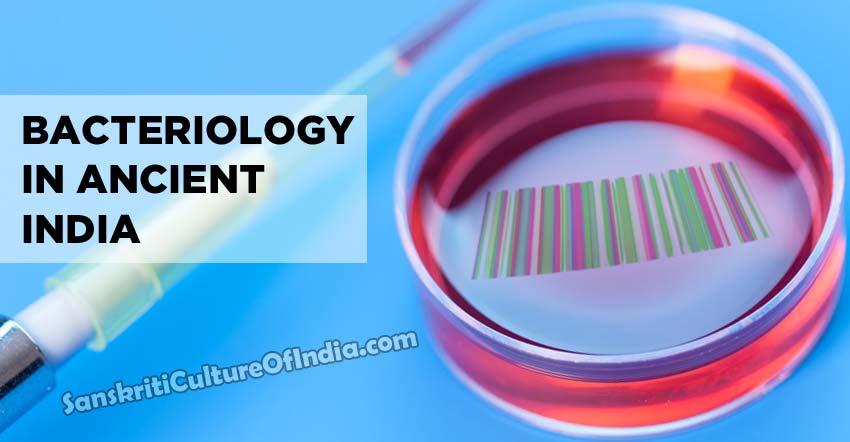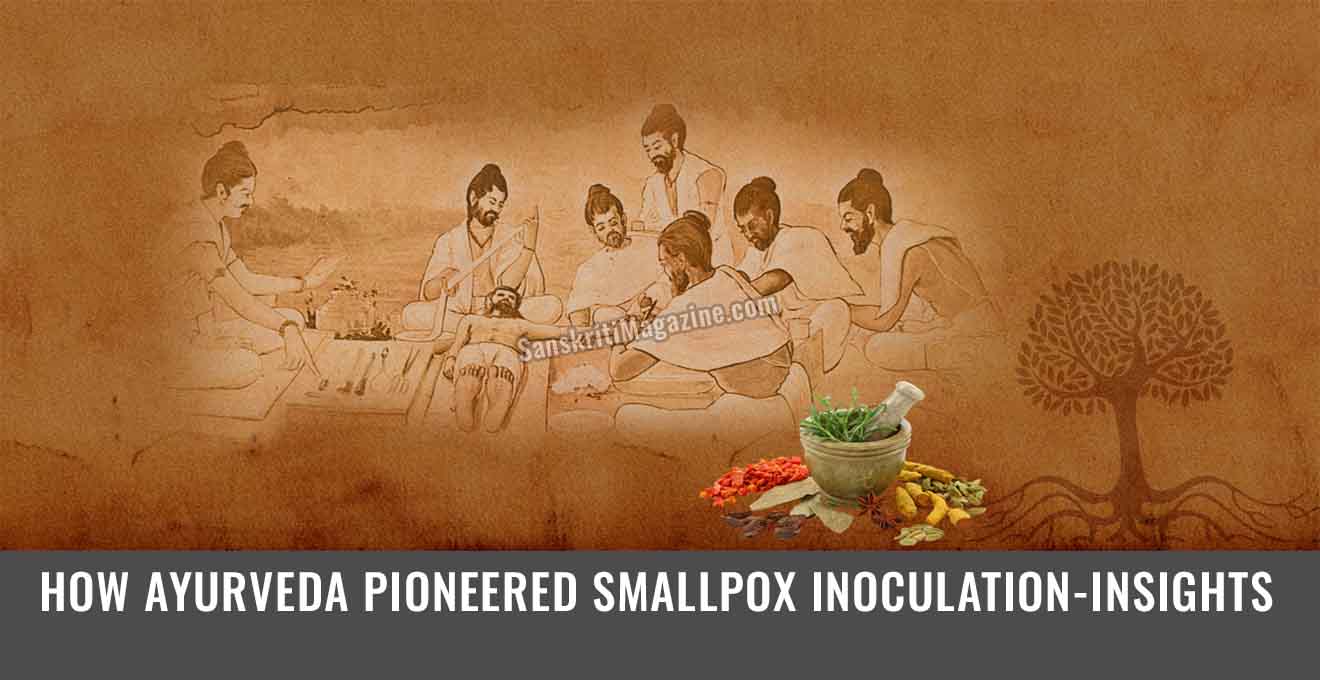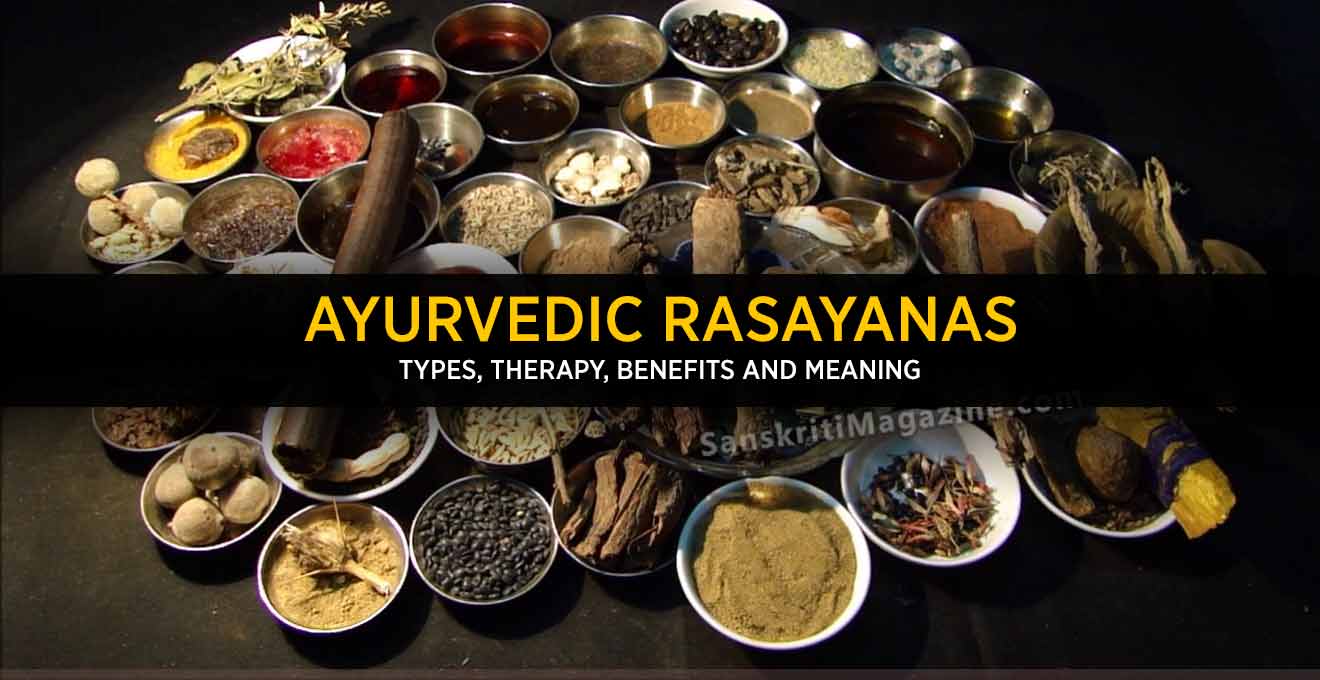[hr]
It is really surprising that while writing on the history of science, on any branch, western writers make great effort to dig out, even stray, indirect and scanty references from the sources mainly confined to their own world, but would generally keep out of bound all references of ancient India’s contribution to any scientific subject, be it medicine, mathematics, astronomy, chemistry, botany or bacteriology.
Thus Majumdar critically remarked “It is a great regret to us that the European writers to give our ancestors the honoured place they should hold in the history of the science of medicine”. However, whatever may be motive of others we ourselves are quite oblivious or disregardful of our own scientific heritage.
An attempt is made here to disseminate the truth that in matters of basic knowledge of bacteriology ancient India’s contribution stood supreme at a time far distant from the era of the birth of the modern scientific world.
In the aetiology of many diseases microbial relation played a role and this could be realized by the men of modern medicine only a little over a hundred years hence. It was Louis Pasteuer who first shed light on the germ theory of diseases. This monumental theory upon which much of modern medicine is based was founded on the observation, by Pasteuer, on the cause and effect of lactic fermentation by living microorganism.
However, the knowledge of microorganism, both pathogenic and non-pathogenic could be traced to the well codified descriptions in various texts of Ayurveda and also in nonmedical literature of ancient India.
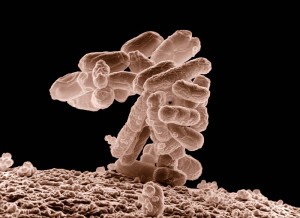 Pertinently it may be pointed out here that modern pathologists might have even got some clue to the germ theory of diseases from Ayurveda. It is well known that with the beginning of the European contact with India many valuable manuscripts on science and culture were passed on to the West to decipher the knowledge treasured in them.
Pertinently it may be pointed out here that modern pathologists might have even got some clue to the germ theory of diseases from Ayurveda. It is well known that with the beginning of the European contact with India many valuable manuscripts on science and culture were passed on to the West to decipher the knowledge treasured in them.
Thus Pendse rightly observed “It is highly interesting to note that the first and foremost attempt to uncover and investigate the enormous Ayurvedic literature has been done by European scholars ….. all those European studies led to great discoveries which throw light to our ancient culture”. Dr. T.A. Wise, one of the principals of Calcutta Medical College, (Estd. 1835) translated Caraka Samhita. From his translation western scholars must have drawn valuable information’s which surely helped them to throw new light on many subjects of medical interest inclusive of bacteriology.
Now turning to the subject proper it can be asserted that ancient Indian philosopherscientists must have definite knowledge of microorganism and other microscopic object too. To substantiate such contention, while for the former, one has only to refer to the ‘Krmis’ of blood (Sonitajanatu) dealt with in the Ayurvedic treatise of Caraka Samhita, and for the latter to the description of the internal structure of a leaf histologically described by Rsi Parasara – the celebrated author of ‘Vrksayurveda’ the ancient Indian botany (An introduction to this was published by Sircar, N.N. in Jour. of the Asiatic Society of Bengal, July 1950, Vol. XVI).
So far as Krmis are concerned, Caraka says “Krmis are found in the blood vessels (Sthanamraktavahinyo dhamanyah). They are of microscopic size (Anavah), circular or disc like (Vrtta) etc. etc.
However, within the short limit of this article facts are being marshaled here from the various Ayurvedic texts like Caraka, Susruta, Vagbhata, Madhavakar and other notable Ayurvedic literature – to throw light on the bacteriological aspect of the pathology of diseases and antibacterial properties of certain drugs, as was enunciated by the above medical authorities of ancient India.
In connection with the prognosis of seven kinds of leprosy, (Kustha) Caraka has mentioned the presence of bacteria or microbes under the term of “Krmi” and “Jantumanti”. He further corroborates the microbial aetiology of leprosy and says that these microbes or krmis, at certain advanced stages, start invading the skin (twak), flesh (mamsa), blood (rudhira), blood vessels (sira dhamani), tendons (snayu) and cartilages (tarunasthi). Similarly Susruta also advocates the microbial aetiology of leprosy and states “Sarvani kusthani savatani sapittani saslemani sakrminica” which means Krimis or bacteria along with Tridosa (Vata, Pitta and Kapha or Slesma) are involved in the causation of all kinds of leprosy.
In dealing with other diseases Caraka classifies five kinds of brain diseases (Siroroga). He thus states “Panca siroroga in Vata Pitta Kapha sannipata Krmijah”. With all probability, this Krmija variety of brain disease may be equated with the diseases of the meningo coccal infection of precisely Meningitis. Likewise in the aetiology of chest diseases (Hrdroga) Caraka confirms bacterial origin as one of the five causes. Thus Carka says “Pancahrid roga iti Sirorogairvyakhyatah”.
In the nineteenth chapter of Sutrasthan Caraka has made a generalization of the pathogenic organisms which he has classified into twenty varieties and says “Vimsatih krimijatayayay….. Out of the twenty varieties two originates from external uncleanliness which Caraka terms ‘Bahirmalaja’. Then six varieties originate in blood (Sat sonitajah). They are named ‘Kesadah’ Lomadah’, Lomadwipah’, Saurasah’ ‘Audumbarah’ and ‘Jantumatarah’. Of the lymphatic origin, Caraka defines seven varieties of Krimis (Sapta kaphajah) viz, ‘Antradah’, ‘Udaradah’, ‘Hridayacarah’, ‘Cyuravah’, ‘Darbhapuspah’, ‘Saugandhikah’, ‘Mahagudah’.
Lastly Caraka completes the list of twenty varieties by mentioning quite separately five varieties of Krimis of faecal origin (Panca Purisajah). They are termed ‘Kakerukah’, ‘Makerukah’, ‘Sasulakah’, ‘Lelihah’ and ‘Sausuradah’. It is quite pertinent to note here that according to Caraka there are in all, thirteen varieties of pathogenic micro-organisms of blood and lymphatic origin. Curiously enough, according to the modern bacteriology there are mainly about 14 groups of pathogenic microbes, viz. Coccus, Neisseria, Cornebacterium, Fungi, Endamoeba, Haemophylus, Clostridia, Mycobacterium, Brucella, Pasteurella, Salmonella, Shigella, Coliform and Vibrios. Now it is for the modern bacteriologists to find any correlation that may exist in the Caraka’s main classification of bacteria into blood and lymph group on the one hand and modern classification on the other.
To be a little more explicit, modern bacteriologists are being invited to find out the propriety in Caraka’s main classification of pathogenic bacteria which may really have preferential affinity either to blood or lymph tissues to make two distinct groups,only as media for originating, propagating and growing to produce pathological conditions. After all bacteria are expected to be transported through or found primarily in the body-fluids which are nothing but blood or lymph tissues. Again we find that Madhava Kar, an eighth century author on Ayurvedic pathology, has codified this knowledge of bacterial aetiology of diseases in a very precise manner in his treatise – Madhava Nidan’.
Thus in the chapter on ‘Krmi nidan’ (bacterial pathology) Madhava primarily makes two broad divisions of Krimis according as they are found in the body – internally or externally. Then he makes further grouping according as they originate in excreta like sweat (Vahirmalajah), lymptatic tissues (Kapha), blood (Asrk) and lastly in faeces. This main grouping of Madhava covers all the twenty varieties of Krimis, as was defined by Caraka and mentioned earlier. However, Vijaya Raksita, the commentator of Madhava nidan, quite amazingly throws further light on this knowledge of micro organisms by mentioning the advocacy of Caraka that apart from these twenty varieties of pathogenic bacteria. (c.f. Janayantiti rogah) there are some non-pathogenic organisms also (“Avaikarikatwena rogadhikare nocyante”). The latter are called ‘Sahaja Krimis’ as opposed to the former group that is called ‘Sanjata Krimis’ which are acquired through infection.
Further, Madhava Kar has described various pathological manifestations, which take place with bacterial infection in general, and says that there may be fever (Jwara), paleness (Vivarnata), various kinds of pain (sulam), chest affection (Hridroga), loss of physical coordination (Sadanam), coma (Bhrama), apathy for food (Bhaktadwesa) and diarrhoea (Atisara).
Next, it is quite striking to note there about the knowledge of communicable diseases held by the ancient Ayurvedic authorities. Naturally communicability of diseases definitely presupposes the existence of pathogenic microorganisms – through the agency of which only infection can run from one person to another under various kinds of personal contacts. Thus Susruta says, while dealing with the pathology of leprosy (Kustha), that certain diseases may be communicated from one diseased person to another due to coition (prasangat), and other kinds of bodily contacts (Gatrasamsparsat), exhalation (Niswasat), eating in association with or from the same dish (Saha bhojanat), use of the same bed and seat (Sahasayyasanaccapi) and from wearing apparels, cosmetics garlands etc. (Vastramalyanulepanat).
As for example, Sustruta cities Leprosy (Kustha), various fevers (Jwarasca), Consumption or tuberculosis (Sosasca), Opthalmia (Netrabhisyanda), epidemic or unprecedented diseases (Aupasargik or Akasmik rogasca). It is needless to say, ‘Akasmik’ or epidemic diseases happen only due to communicability of germs.
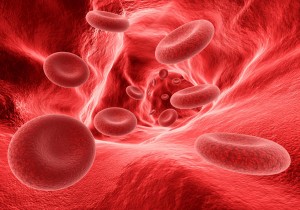 Secondly, when one carefully studies Ayurvedic pharmacopeias (Nighantus) one finds many drugs which have, among other therapeutic indices, some special indices termed as ‘Krimighna’, Krimihantri’, Jantughna’, ‘Jantuhantri’ etc. What should one really understand from these terms? Rationally and complacently they should not be simply taken to mean anthelmintic properties. Because these drugs are never used, either in Ayurvedic or modern medicine, as specific anthelmintic. Obviously, for these terms the real implication lies in their having antibacterial action, in as much as the word ‘Krimi’ means a bacterium which has been variously elucidated earlier. Etymologically the term ‘Jantughna’ or ‘Jantuhantri’ means an agent that kills a living being. Now the reader’s attention is being drawn here to the world ‘Jantumatarah’ quoted earlier from Caraka as one of the six varieties of Krimis of the blood group, and also the word ‘Jantava anavah’ quoted from Madhava Nidan. Against the above context the reader is reminded that the words ‘Krimi’ and ‘Jantu’ are synonymous-meaning a microorganism.
Secondly, when one carefully studies Ayurvedic pharmacopeias (Nighantus) one finds many drugs which have, among other therapeutic indices, some special indices termed as ‘Krimighna’, Krimihantri’, Jantughna’, ‘Jantuhantri’ etc. What should one really understand from these terms? Rationally and complacently they should not be simply taken to mean anthelmintic properties. Because these drugs are never used, either in Ayurvedic or modern medicine, as specific anthelmintic. Obviously, for these terms the real implication lies in their having antibacterial action, in as much as the word ‘Krimi’ means a bacterium which has been variously elucidated earlier. Etymologically the term ‘Jantughna’ or ‘Jantuhantri’ means an agent that kills a living being. Now the reader’s attention is being drawn here to the world ‘Jantumatarah’ quoted earlier from Caraka as one of the six varieties of Krimis of the blood group, and also the word ‘Jantava anavah’ quoted from Madhava Nidan. Against the above context the reader is reminded that the words ‘Krimi’ and ‘Jantu’ are synonymous-meaning a microorganism.
Kurup, in connection with investigating the antibiotic properties of some Indian medicinal plants says “In Ayurvedic system of medicine a large number of plants are being used for treating diseases of bacterial origin and good results have been obtained with some of them”. From this work a few drugs are being cited below to show as to how the Ayurvedic attributes viz. ‘Krimighna’, ‘Jantughna’ etc. attached to them are corroborated by modern researchers also.
1. Emblia ribes Burn, Fam. Myrsinaceae, Sans. Vidanga found active against both Staph. Aureus and Esch. Coli. (Ind. Journ. Med. Res. 1949, 169). This fact reveals rather strikingly, that Vidanga is both anthelmintic and antibacterial – quite known by the ancient Ayurvedists.
2. Psoralea corylifolia Linn, Fam. Compositate Sans. Vakuci. Found to be highly antibacterial against Staph. Aureus; curative for Leucoderma. Dhanvantari and Rajnighantu have designated it as antibacterial and antileprotic.
3. Pongamina pinnata, Fam. Leguminaceae. Found active against Staph. Aueus. Both Caraka and Susruta have use it in Erysepalus, Leprosy and various skin diseases.
4. Plumbago zelanica Linn, Fam. Plumbaginaceae Sans. Citraka. Found to be active against Staph. aureus; powerful germicide (Chopra et al. Glocs.Ind. Med. Plants). Susruta and Vagbhata have advocated its use in leprosy and skin diseases. Madana Vinoda has designated it as an antikrimi i.e.(cf…..Kusthasopharasa krimi kasajit).
5. Acorus calamus Linn. Fam. Araceae, Sans. Vaca. Chopra et al, have reported that Calamus (Vaca) has got marked anti-tubercular action, in vitro studies, in 10 mcg. per ml. dose. It is also stated that it inhibits the growth of Sh. Dysenteriae. Vibrio cholerae, D. pneumonia etc. Thus against the perspective of modern findings of the antibacterial properties of Vaca the Ayurvedic denominations – ‘Krimighna’, ‘Jantughna’ etc. are quite appropriate.
6. Cymbopogon citrates DC. Fam. Graminoeae, Sans. Bhustrina (Lemon grass). In Ayurveda this plant has been highly spoken of as an antibacterial drug. Thus it is said that by its application virulent microorganisms (‘Jantunsamuddhatan’) are instantly killed. Maruzzolla and Liguori reported that lemon grass oil has a powerful fungicidal activity against pathogenic organism. This is quite in agreement with the Ayurvedic advocacy mentioned above.
Now it is for elucidation that all the above cited drugs, excepting the item no.1, have never been used either in Ayurvedic practice or in modern medicine as an anthelmintic. So the therapeutic indices expressed by the terms ‘Krimighna’, ‘Jantughna’ etc. against so many Ayurvedic drugs have thus served to connote antibacterial properties quite effectively. Further, above this knowledge of bacteriology one may find references in non-medical literature as well of ancient India.
Thus mention may be made of Jaina sastra which describes microorganism as ‘Dwiindriya- jiva’ i.e. living being with two sense organs of touch and taste only (Krimyadinam sparsanam rasanadhikam’ – Sarvartha Siddhi, Chp. 2, item 23).
After the above survey one may confidently summerise that the knowledge of bacteriology was nothing alien to ancient India. Rather various aspects of it, particularly microbial pathology were precisely codified in many Ayurvedic classics thousands of years ago when medicine in general, not to speak of bacteriology, had not grown to any remarkable extent in the West which is considered as the originator of bacteriology. However, one point stands out quite relevant that while the development and progress of modern bacteriology depended entirely on the invention, firstly, of a precursor of microscope by the Dutch draper Leeuwenhoek and thereafter full fledged compound microscopes by others and concurrently various microbiological techniques, ancient India could codify this knowledge through some other means of perception, indeed a super-perception, which really baffles our imagination.
~ N. N. Sircar
REFERENCES
- Majumdar, G.P. Archives Internationales d’Histories des Sciences UNESCO, No.14, p.120, (1951).
- Pendse, G.S. The Pharmaceutics, Feb 15 (1958).
- Sircar, M.N. Jour of Royal Asiatic Society of Bengal, Vol. XVI, No.1, P123 – 139 (1950).
- Caraka Sam. Vimansthan, Chp. 7, item 10.
- Susruta Sam. Nidansthan, Chp. 5, item 5.
- Caraka Sam. Sutrasthan, Chp.19.
- Caraka Sam. Ibid.
- Kurup, P.A. Jour. Sci. Ind. Res. India, Vol. 15c, P. 153.
- Chopra et al, ibid, vol. 17a, No.1, P.195.
- Marruzella & Riguori. Jour. Amer. Pharm. Assn. Sci. Ed. April (1957).

